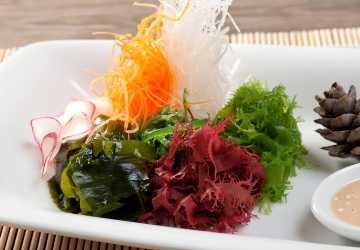Gourmet cooking perpetually seeks to transgress boundaries and explore avant-garde frontiers. One burgeoning trend within the gastronomic realm is the utilization of foraged ingredients. Chefs to use foraged ingredients are not only augmenting their culinary creations with idiosyncratic flavors but also adopting a sustainable and eco-conscious methodology. This exposition delves into the enthralling domain of gourmet cooking with wild plants and the sophisticated art of foraging for high-end cuisine.
The Ascendancy of Foraged Ingredients in Gourmet Cooking
Historical Perspective
Foraging is an archaic practice. Indigenous tribes and bucolic populations have subsisted on wild flora for eons. Nonetheless, the propensity for chefs using foraged ingredients in haute cuisine is a relatively nascent phenomenon. This paradigm shift is propelled by a fervent desire to re-establish symbiosis with nature and to concoct dishes that epitomize the local terroir.
Benefits of Foraging for Chefs
- Peculiar Flavors: Foraged ingredients proffer gustatory experiences and textures unattainable in cultivated botanicals. These esoteric components can elevate a dish, engendering a remarkable gastronomic odyssey.
- Sustainability: By integrating wild plants, chefs can mitigate their dependence on commercially cultivated produce, which often necessitates substantial resources for cultivation and logistics.
- Local Sourcing: Foraging for high-end cuisine bolsters local ecosystems and attenuates the carbon footprint concomitant with food transportation.

Eminent Foraged Ingredients in Gourmet Cooking
Wild Herbs and Greens
Wild herbs such as nettles, dandelions, and purslane are infiltrating gourmet kitchens. These verdant herbs are replete with nutrients and offer a gamut of flavors, from acrid to zesty.
Edible Flowers
Edible flowers, including elderflowers, violets, and nasturtiums, embellish dishes with chromatic splendor and delicate flavors. They are frequently incorporated into salads, desserts, and as garnishments.
Mushrooms
Wild mushrooms, encompassing chanterelles, morels, and porcini, are coveted for their profound, earthy flavors. Gourmet cooking with wild plants often showcases these fungi in risottos, potages, and sauces.
Berries and Fruits
Foraged berries such as wild strawberries, elderberries, and blackberries contribute natural sweetness and vivid hues to dishes. They are prevalently utilized in desserts, sauces, and libations.
Challenges and Considerations in Foraging
Identifying Edible Plants
Foraging necessitates an astute knowledge of phytological identification to ascertain the edibility of ingredients. Misidentification can precipitate grievous health hazards.
Seasonality
Foraged ingredients are intrinsically seasonal, necessitating chefs to be adaptable and inventive with their menus. The availability of wild plants fluctuates significantly with the seasons and geographic locales.
Environmental Impact
While foraging can be sustainable, it is imperative to exercise it with circumspection. Overharvesting can lead to the decimation of local plant populations and disrupt ecological equilibria. Chefs using foraged ingredients must forage in a manner that preserves the natural habitat.
The Role of Foraged Ingredients in High-End Cuisine
Enhancing Flavors
Foraging for high-end cuisine empowers chefs to experiment with novel flavors and textures, crafting dishes that are both pioneering and intrinsically connected to nature.
Storytelling Through Food
Gourmet cooking with wild plants enables chefs to weave a narrative through their culinary creations. Each ingredient harbors a history and a niche in the natural world, imbuing the dining experience with profundity and significance.
Menu Development
Chefs using foraged ingredients frequently curate their menus based on seasonal availability. This modus operandi not only ensures the utmost freshness but also encourages diners to revel in the beauty of seasonal gastronomy.
Tips for Aspiring Forager Chefs
Start Small
Initiate foraging with easily identifiable plants such as dandelions, nettles, and wild garlic. These plants are ubiquitous and relatively innocuous.
Educate Yourself
Dedicate time to acquiring knowledge about local flora and foraging practices. Literature, online courses, and foraging workshops can furnish invaluable insights.
Respect Nature
Always forage with reverence. Harvest judiciously, taking only what is necessary, and ensure sufficient regeneration for both the plants and the surrounding wildlife.
Collaborate with Experts
Engage with local foragers and botanists to augment your knowledge and ensure safe and sustainable foraging practices.
Unconventional Foraged Ingredients in Fine Dining
Littoral Flora
Culinary artisans are increasingly gravitating towards littoral regions to procure unique foraged ingredients. Seaweed varieties such as nori, wakame, and dulse impart umami and mineral-laden flavors to gastronomic creations, frequently employed in broths, salads, and as garnishes.

Arboreal Derivatives
The exploitation of arboreal derivatives is gaining ascendancy. Birch sap, for instance, can be concentrated to produce saccharine syrup, while the inner bark of specific trees can be milled into flour. These constituents add intricacy and singularity to both confectionery and savory dishes.
Foraged Spices
In addition to herbs and vegetables, chefs are delving into wild spices. For instance, sumac from wild shrubs offers a tangy, citrusy nuance, while wild fennel seeds impart an anise-like character. These spices amplify the profundity of flavors in gourmet preparations.
The Art of Integrating Foraged Ingredients
Gustatory Pairing Methodologies
Incorporating foraged ingredients necessitates an acute comprehension of gustatory pairing. Chefs must experiment with amalgamations to equilibrate the robust and oftentimes unaccustomed flavors of wild plants with other components on the plate.
Textural Innovations
Foraged ingredients can introduce unprecedented textures. For example, the gelatinous consistency of certain seaweeds can be harnessed to craft unique mouthfeels in sauces and jellies, while the crunch of wild greens can juxtapose softer elements.
Ethical Foraging Practices
Biodiversity Preservation
Chefs using foraged ingredients must prioritize the preservation of biodiversity. This entails foraging with moderation and ensuring that plant populations are not extirpated. Conscientious harvesting techniques guarantee that ecosystems remain equilibrated and thriving.
Legal Considerations
Foraging for high-end cuisine is circumscribed by regulations in numerous regions, and chefs must be cognizant of local statutes and regulations. Obtaining requisite permits and understanding protected species is imperative to ensuring that foraging activities are lawful and sustainable.
Health Benefits of Foraged Foods
Nutritional Supremacy
Foraged foods frequently exhibit superior nutritional profiles compared to their cultivated counterparts. Wild plants, flourishing in natural, biodiverse habitats, often boast elevated levels of vitamins, minerals, and antioxidants.
Gastrointestinal Health
The consumption of a diverse array of foraged plants can fortify gastrointestinal health by introducing a plethora of fibers and prebiotics. This dietary diversity supports a robust microbiome, which is integral to overall wellness.
Conclusion
The integration of foraged ingredients in gourmet cooking exemplifies the ingenuity and resourcefulness of contemporary chefs. By embracing wild plants, chefs are not only augmenting their culinary arsenal but also advocating for sustainability and a profound connection to nature. As the proclivity for chefs using foraged ingredients proliferates, epicureans can anticipate savoring the unparalleled and vivacious flavors of foraging for high-end cuisine.
